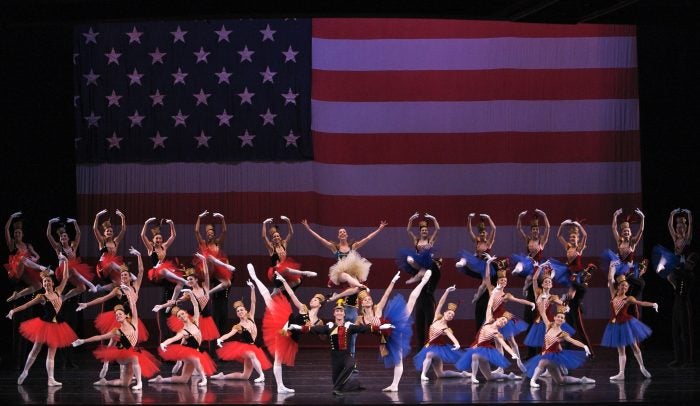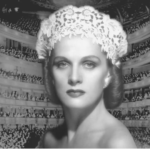The Stars and Stripes (1958) ballet stands as a luminous testament to American artistry, capturing the spirit of its time with an indelible mark. This ballet not only reflects the cultural landscape of America in the late 1950s but also pays homage to significant figures who contributed greatly to the nation’s history and artistic expression.
Origins and Historical Context
As George Balanchine transported viewers into a realm of beauty and rhythm, the historical backdrop against which the Stars and Stripes was conceived played a crucial role in shaping its narrative. Understanding the origins is essential to appreciate its depth fully.
The Influence of George Balanchine

George Balanchine remains one of the most pivotal figures in the world of ballet, known for his innovative choreography and unique interpretations. His work on the Stars and Stripes demonstrates his ability to blend classical ballet techniques with modern sensibilities.
Balanchine’s approach often involved minimalistic storytelling, allowing movement to speak volumes. In this piece, he utilizes dynamic formations and intricate footwork to convey not just the grace of the dancers but also the essence of American pride. Each leap and pirouette becomes a visual celebration of the nation’s vibrancy. His choice to use John Philip Sousa’s upbeat compositions serves to evoke emotions tied to national identity, resonating deeply with audiences at that time.
Cultural Reflections of the Late 1950s
The late 1950s marked a period of significant social change in the United States, encompassing a wide range of movements from civil rights to cultural renaissance. In contrast to contemporary turmoil, Stars and Stripes arrives as an emblem of unity and optimism.
Rather than addressing social issues directly, the ballet offers a spirited escape—an artistic salute to the pageantry and patriotism of American life. Through its bold formations, rhythmic energy, and colorful costuming, Balanchine’s work reflects a desire to uplift and entertain, embodying a vision of national pride through the lens of classical dance.
Musical Composition and Choreography

At the heart of the Stars and Stripes lies its vibrant musical composition, drawing upon the energetic works of John Philip Sousa, particularly “Stars and Stripes Forever.” The interplay between sound and movement creates a synergy that amplifies the emotional resonance of the ballet.
The Power of Sousa’s Music
John Philip Sousa’s music epitomizes the exuberance of Americana, revealing layers of passion and patriotism. The piece serves as a robust backbone for the choreography, infusing a sense of grandeur into the performance.
As the orchestra plays, phrases of Sousa’s distinct march rhythm echo throughout the theater, rousing audiences and instilling an infectious energy. Each note stimulates a visceral response, with the dancers translating the cadence beautifully through movement. The commanding score serves as an invitation to engage deeply with the themes of the ballet—the vitality of the American spirit, the celebration of independence, and subtle allusions to historical narratives.
Innovative Choreographic Techniques
Balanchine’s innovative choreography enhances the overall impact of the Stars and Stripes. He masterfully employs various choreographic techniques that push the boundaries of conventional ballet. Notably, his litheness allows for a reimagining of movements that challenge standard expectations, inviting a fresh experience for the audience.
The choreography consists of swift transitions, intricate formations, and synchronized patterns that mirror Sousa’s musical complexity. Balanchine’s emphasis on geometric configurations draws attention to the fluidity of human movement, presenting it as a visual tapestry interwoven with the musical score. Dancers often shift seamlessly from classical balletic forms to more contemporary expressions, reflecting the evolving landscape of dance itself.
Communicating National Identity through Movement
Within the Stars and Stripes, movement becomes a powerful vehicle for expressing national identity. As the dancers take the stage, they embody not just the technical prowess of ballet, but also the very essence of what it means to be American. Their movements carry connotations of freedom and unity, signifying hope and continuity.
Balanchine’s work is often seen as democratizing dance by emphasizing collective expression over individual virtuosity, reflecting a nation that values diversity. Each dancer contributes their individual story while collaborating collectively to create a harmonious portrayal of the American landscape.
A Study of Dance and Visual Aesthetics
In examining the Stars and Stripes, the relationship between dance and visual aesthetics is undeniable. Balanchine’s keen eye for design serves to elevate the overall experience, resulting in a feast for both the eyes and ears.
The Importance of Costumes and Set Design
Costume and set design play a vital role in establishing the vibrancy of the Stars and Stripes. Every element, from the costumes to the backdrop, encapsulates a kaleidoscope of colors and textures that lend to the atmosphere of the performance.
The costumes, inspired by vintage military attire, evoke a sense of nostalgia while simultaneously rooting the ballet firmly within the context of American culture. The dancers don bright palettes that reflect the exuberant spirit of the music and the choreography, ensuring that visual elements enhance the overall expression of the work.
The Impact of Lighting in Performance
Lighting in the Stars and Stripes heightens the dynamics of the entire performance. The lighting designers enable light to dance alongside the performers, emphasizing specific movements and creating dramatic contrasts that evoke an emotional response from the audience.
Through precise timing, washes of color illuminate different scenes, highlighting the highs and lows of the ballet. From radiant bursts during triumphant movements to softer glows complementing quieter moments, lighting adds another layer, inviting viewers to immerse themselves wholly in the experience.
Spatial Awareness and Stage Dynamics
Spacial awareness plays a crucial role in enhancing the effectiveness of the Stars and Stripes. The intricate formation shifts and careful spacing among dancers add to the visual allure of the performance. Balanchine intricately designs movements that cleverly utilize the available stage space, ensuring no corner feels neglected.
As dancers glide through formations, there exists a rhythmic balance that captivates audiences. The strategic interplay of isolation and group dynamics engenders a thrilling sense of anticipation, keeping viewers engaged until the very last bow. Balanchine capitalizes on utilizing stage dimensions, resulting in a visual symphony that unites all aspects of production.
Themes and Messages within the Ballet

The Stars and Stripes delves deep into themes prevalent in American society, exploring ideas of unity, resilience, and hope. These messages resonate even today, lending relevance to Balanchine’s creation.
The Celebration of Patriotism
One of the most striking themes within the Stars and Stripes is patriotism. The ballet serves as a homage to the collective pride Americans feel towards their country, highlighting the sacrifices made for the nation and celebrating triumphs along the way.
This theme transcends mere visual spectacle; it sparks contemplation about what it means to belong to a greater whole. The jubilant movements echo cries of “freedom,” encouraging spectators to reflect on their own connections to American ideals—liberty, justice, and community.
Resilience and Collective Strength
As the dancers move in sync, there is a profound illustration of resilience woven throughout the performance. Navigating through historical and societal hurdles, the Stars and Stripes reminds us of human tenacity and the capacity to rise above difficulties together.
In a world often fraught with division, the ballet underscores the importance of solidarity, urging viewers to find strength in adversity. Through the power of collaboration, human beings can conquer challenges, overcome fears, and pave pathways toward a shared dream.
Joy and Optimism in Expression
The inherent joy within the Stars and Stripes encourages audiences to embrace positivity, providing a beacon of hope amid a world filled with uncertainty. The spirited nature of the performance invites participants to recall cherished memories of celebration—barbecues, parades, and gatherings where laughter floats through the air.
Each exhilarating leap and buoyant spin embodies the universal quest for happiness and fulfillment. In offering demonstrations of jubilation, Balanchine reminds us that embracing joy can serve as a powerful antidote to life’s complexities. Within the dance, audiences are granted permission to celebrate, inspiring them to foster a culture steeped in warmth and camaraderie.
Conclusion

The Stars and Stripes (1958) ballet encapsulates a moment in American history where art intertwines with identity, culture, and the spirit of resilience. Through Balanchine’s visionary approach, the ballet reaches far beyond its choreography and becomes a rich tapestry depicting love for country, understanding of self, and connection amongst people. It serves as an enduring reminder that art has the power to unite individuals, inspire hope, and reflect the true essence of our shared experiences.
Through both its joyous expression and the narratives embedded within the performances, the Stars and Stripes continues to resonate, reminding us of our collective journey shaped by nuanced stories, unwavering determination, and an insatiable desire for harmony.
✉️ Stay Connected — Subscribe for Weekly Updates
Discover timeless stories, practical wisdom, and beautiful culture — delivered straight to your inbox.
*We only share valuable insights — no spam, ever.






